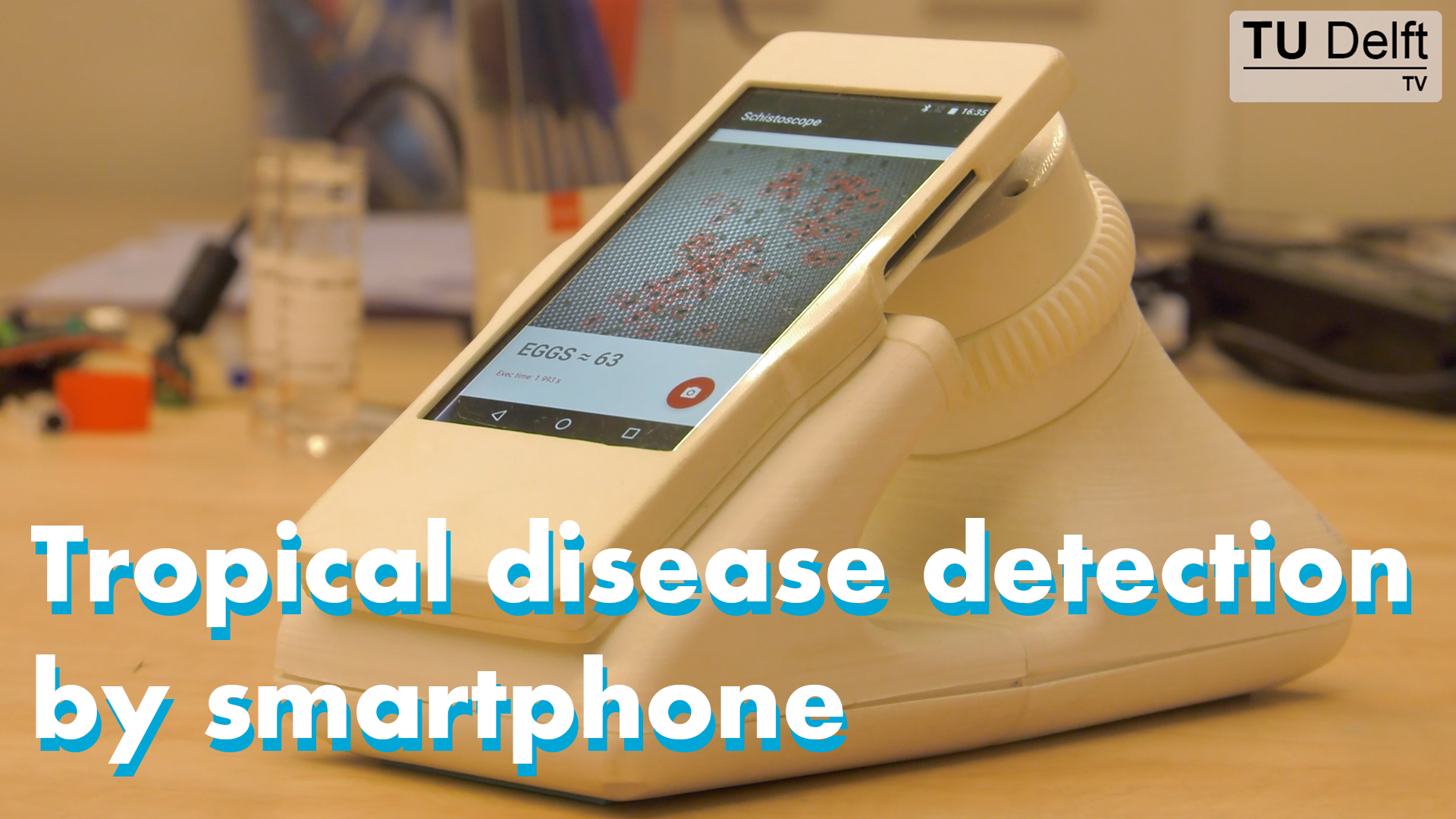Schistosomiasis is a neglected tropical disease which accounts for almost 200,000 deaths a year and affects over 285 million people worldwide.
Temitope Agbana came up with smart algorithms to detect an infection load by smartphone.
The disease is caused by parasitic flatworms, the schistosomes, and can infect the urinary tract or the intestines. “It is a slow killer,” explains researcher Temitope Agbana. “It doesn’t kill like malaria, but causes severe damage over a long period of time.”
Microscopy was used as the conventional method to determine infection. “When the worms grow into adults, they start laying eggs. Someone had to count those eggs to estimate the load infection.” Agbana felt this method was outdated and decided to come up with smart algorithms to count the eggs. Accompanied by a hardware system, these algorithms can now be used by people who are not medically trained.
Smartphone detection
“We started off by turning the camera module of a smartphone around,” says Joy Hooft Graafland, explaining the technology. “This allows you to magnify the image so that the smartphone can use the algorithm to detect eggs in urine.”
To make the urine suitable for smartphone detection, Agbana and his team came up with a very simple and locally sourced way to filter it. “Once that is done you place it under our device and press the button. It will then tell you the visible amount of eggs and infection load.”
“Half the team has already been to Nigeria for some initial testing,” says Jasper Faber. “Now we have two weeks to develop a new prototype. After that, I’ll go back with two others to do some more testing and to see what we can learn from it.”
Agbana’s goal is to set up a production company sometime in the future. “So that we can produce these devices locally, and hopefully solve the problem.”
See the short TU Delft TV documentary below.
Other articles we wrote on detection of tropical diseases:
- Malaria diagnosis by smartphone awarded
- Diagnostic tool for malaria on smartphone receives award
- NWO Open Mind supports two bright ideas from Delft
- Will this awarded design conquer malaria?
TU Delft TV / Delta TU Delft, Marjolein van der Veldt
TU Delft TV / TU Delft TV is a collaboration between Delta and the Science Centre. The crew consists of TU Delft students.



Comments are closed.